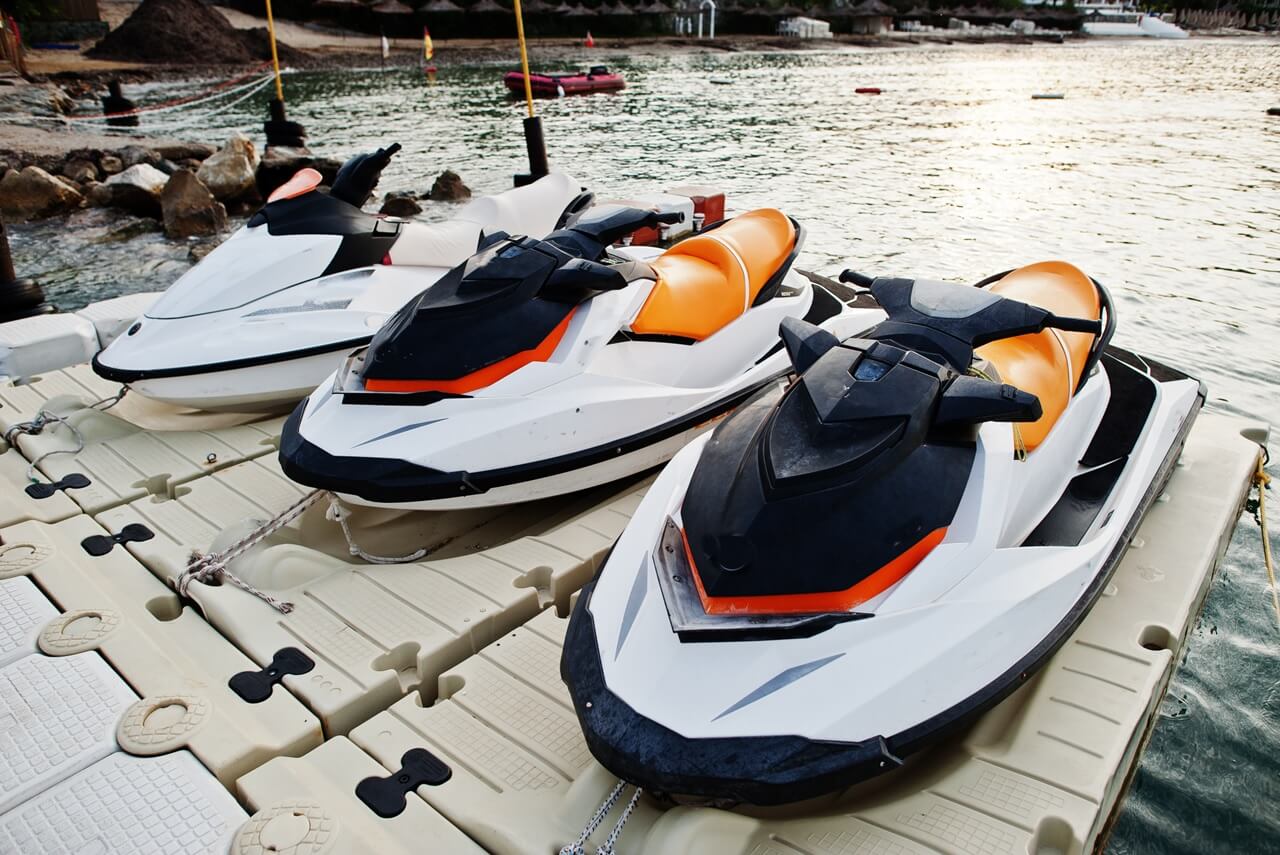
Fueling a PWC (Personal Watercraft)
It’s important to be careful when fueling your personal watercraft, as PWC fuel can ignite or explode when spilled, and an overfilled tank can pose a safety hazard to you and the marine environment.
What is the best way to fill the fuel tank on a PWC?
It is important to fill your tank responsibly to avoid potentially deadly accidents. Take note of the following important points:
- PWC fuel is flammable and explosive. If you trailer your PWC, fill your tank before you get to the water, where there is more chance of spills. However, keep in mind that PWC fuel is especially dangerous if it has spilled or leaked in an enclosed space (where odours can also pose a health risk), as this increases the chances of it igniting or exploding. Wherever you fill your tank, keep fuel away from sparks and other heat sources.
- Fuel system connections can become loose from operating on rough water and from the vibration of the engine. Regularly check the entire fuel system for leaks and make sure the fuel system connections are secure.
- When filling your PWC fuel tank, do not overfill the tank. If you are pumping fuel into your PWC tank using an automatic pump, you will easily know when to stop as the gas will stop flowing when the tank is full. If you are using a gas can or some other method, stop filling the tank at about 2 inches from the top. Read the section below to learn more about PWC fuel tank safety features.
- After you have filled the tank, and before you start the engine, open the door of the engine compartment and check for the smell of vapours. If you smell fuel, find out where it is coming from and do any necessary repairs immediately. This odour indicates that fuel had flooded other parts of the fuel system, which could be a safety hazard.
- Always use the correct type of fuel for your PWC. Refer to the octane rating of the fuel and the operator’s manual of the PWC to make sure you are using the right fuel.
- Always use fresh fuel. If fuel sits in your tank for a long period of time, it can oxidize, which in turn lowers the octane levels, creates volatile compounds and produces varnish and gum deposits that can damage the entire fuel system. In short, old fuel can damage your engine.
How are PWC fuel tanks designed for safety?
PWC fuel tanks are designed not to be filled completely. This is an important safety feature that should be respected by all users.
Never tip the PWC with the idea that you could fill the tank completely. The tank is intentionally designed to leave room for the fuel to expand, and if you overfill it, it could spill into the water and damage the environment or potentially start a fire. Remember that unlike on a boat, there is very little separating you from the fuel tank on a PWC, and safety is of the utmost importance. Know the precise amount of fuel your tank is designed for, and do not add more.
Whether you use diesel or gasoline, fuel expands in heat. If you overfill your tank, fuel could leak, killing marine life and/or potentially igniting. You should know the precise fuel capacity of your PWC (usually between 5 and 20 gallons of fuel) so that you never overfill the tank.
Note: Hot temperatures do not lead to gas tank explosions. PWC fuel must heat to 500°F (260 °C) for it to ignite, which is impossible just from the heat of the sun. It would take a combination of factors to cause a fuel explosion in a gas tank.
Remember: always keep an appropriate fire extinguisher on board your PWC, as per the law, and always wear the right type of life jacket for your chosen activity.
Learn all about boating safety in Canada
INSN can help you learn what you need to know to enjoy going out on the water safely, anywhere in Canada.
Take the official Canadian online boating exam and learn all about Canadian boating regulations and laws, including how to operate and fuel PWC safely and efficiently.

